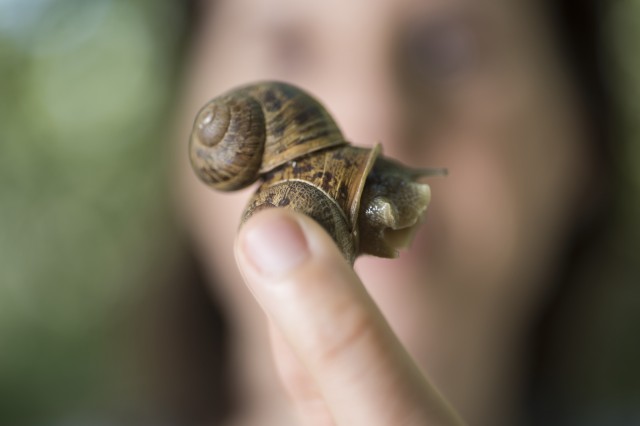SLIME
What is SLIME?
Snails and slugs Living in Metropolitan Environments (SLIME) is a community science project that aims to catalogue the biodiversity of terrestrial gastropods (land snails and slugs) in Los Angeles County and throughout Southern California. The Natural History Museum’s collection of land snails includes thousands of specimens from locations throughout the Los Angeles basin and spans the last 100 years. However, not much is known about this mollusk biodiversity today, especially within the cities of Southern California. That’s where community scientists come in!
We’d like you to help us complete the first community science snail survey focusing on urban Southern California by finding snails and slugs and taking photos and emailing them to us or uploading them to the SLIME iNaturalist page. With this information we hope to identify the species that call the urban areas of Southern California home, those that are new to the area, and those that haven’t been able to survive the changes that urbanization has made to their homeland.
The question at the heart of this project is, “What is the biodiversity of land snails and slugs in Los Angeles County?” All over the world, land snails are one of the most vulnerable animal groups to extinction. Many species evolve quickly to very specific habitats, making them sensitive to environmental changes and therefore vulnerable to extinction. Southern California species are no different. Many land snail species native to Southern California are threatened with extinction because their natural habitat has been reduced or changed substantially by human development and urbanization. Think: cement, freeways, and buildings where forests and chaparral once were. For other snails, in particular some foreign species, our Mediterranean climate and urban environment can make for easy living. Still other species can, despite the drought, survive comfortably in manicured gardens and other watered green spaces even in heavily urbanized places. These non-natives can be neutral or detrimental to native species.
How to Participate
- Find snails and slugs: From a walk around your block, backyard garden, local library or school, to a hike in a local park, look for snails and slugs in damp areas under bushes, among wood pieces in wood piles, between and under rocks or bricks, on tree bark, on plants, among leaves, and along wet sidewalks.
- Take Pictures
Photograph the snails or slugs, and document when and where you found it (GPS or cross streets). - Submit Your Observations
Submit photos and supporting data (date, time, address/locality, and observational notes) by e-mail; upload to the project page; or use the iNaturalist app (Android and iOS).
What happens next?
Each snail/slug you found will be identified, recorded in a database, and added to the museum’s permanent collection with you listed as the collector. Your efforts will help us determine the distribution of snail species in greater Los Angeles, identify introduced species, determine which species are common versus rare, and much more!
Data
So far, Cornu aspersum (the common garden snail) is the most common specimen contributed by SLIME community scientists.
To view the most recent SLIME data from our participants sending in digital photos, visit our project page on iNaturalist.
On the project page you will be able to view a map of observations that have been submitted, see who has contributed, how many contributions each person has made, and how many of the potential species in this area have been documented through the project.
Staff
For general inquiries, e-mail us at slime@nhm.org.
